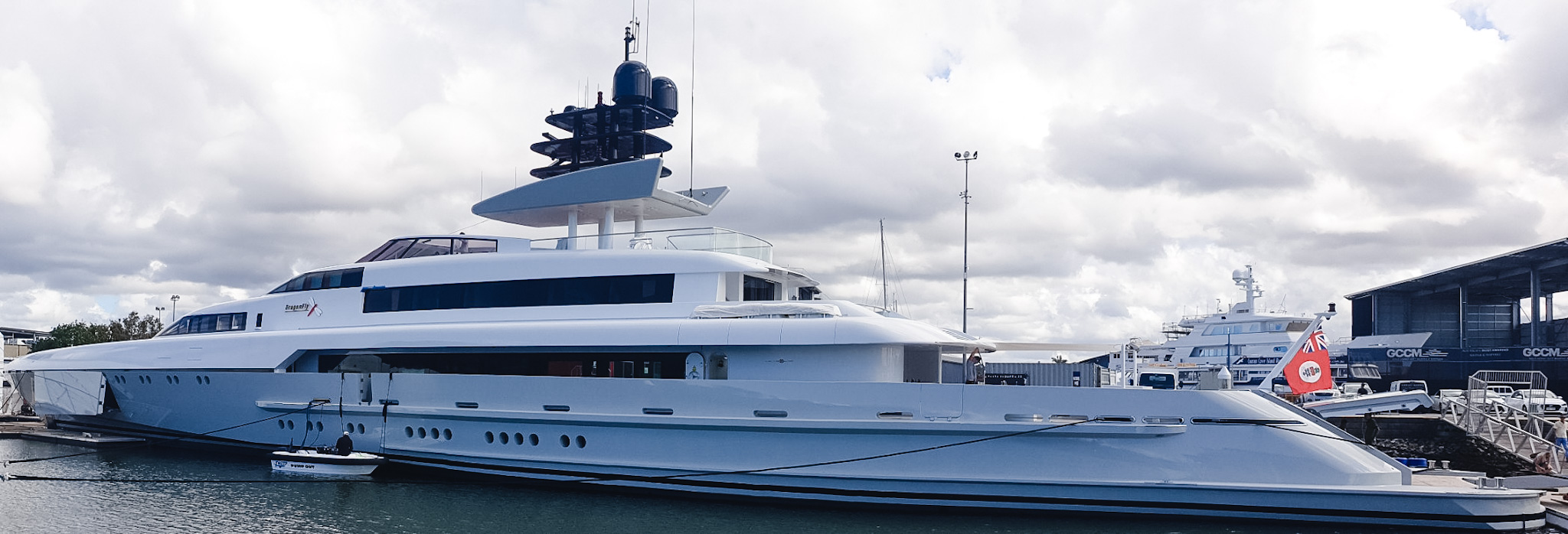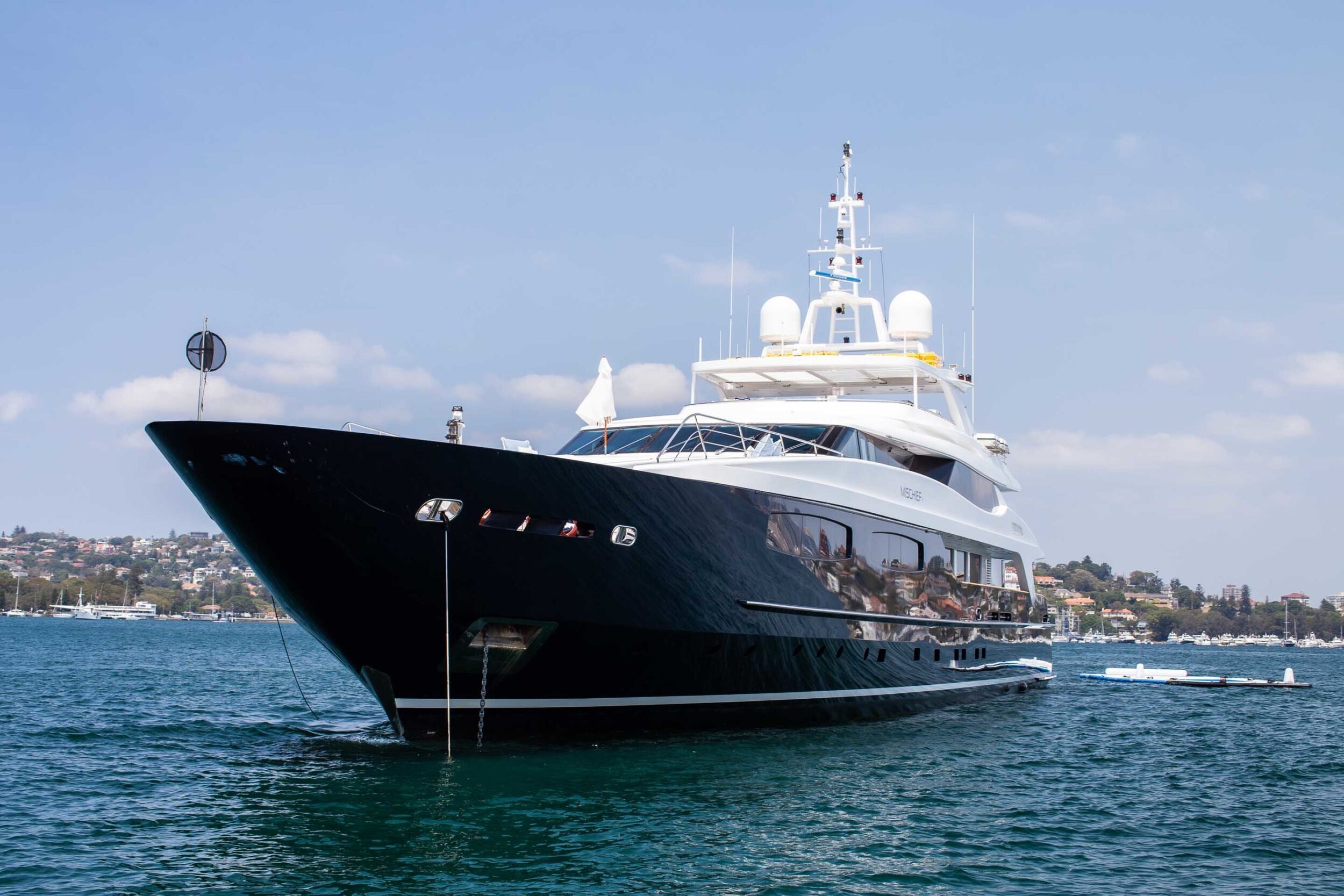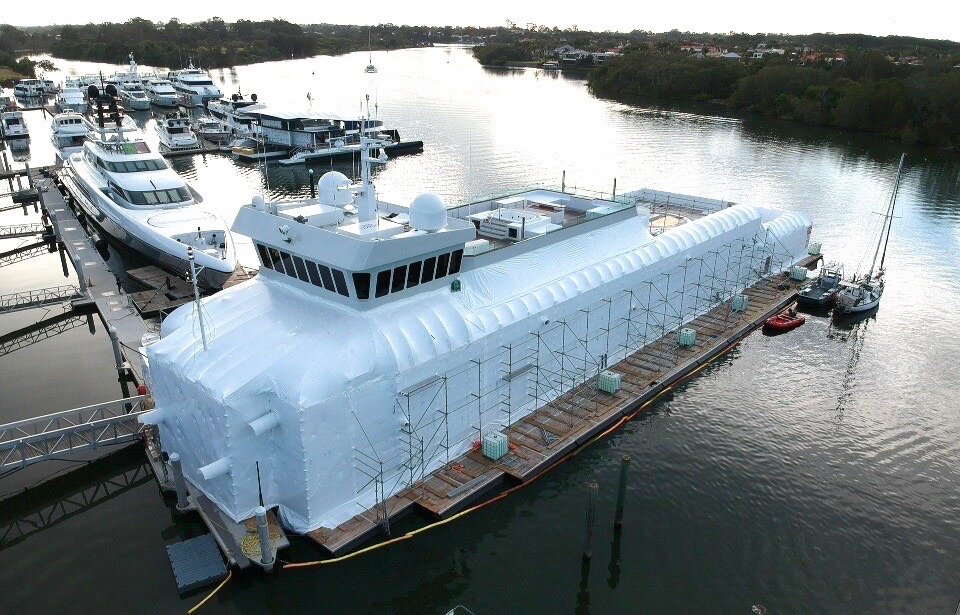Vessel Protection & Encapsulation
Vessel Protection & Encapsulation Are Critical For Preserving Vessel Integrity.
Protecting both the internal and external areas of a vessel during shipyard periods or minor works is essential for maintaining its structural integrity, operational efficiency, and appearance. Ensuring that internal spaces are shielded from damage and external elements are kept at bay helps preserve the vessel’s condition and minimizes the impact of any work being done.
Benefits & Advantages of Vessel Encapsulation
Vessel encapsulation, which involves containing a ship within a protective barrier or enclosure during yard periods, offers several important benefits related to both environmental protection and operational efficiency. Here are the key reasons why vessel encapsulation is crucial during yard periods, emphasizing the advantages of containing the job site from external elements and preventing debris from escaping.
Importance: Shipyard periods expose vessels to various weather conditions, including rain, snow, UV rays, and wind.
Benefits: Encapsulation creates a protective barrier, shielding the vessel from environmental elements and preventing potential damage to surfaces, coatings, and equipment.
Importance: Exposed metal surfaces on a ship are susceptible to corrosion, especially in maritime environments.
Benefits: Vessel encapsulation minimises the risk of corrosion by preventing exposure to saltwater, humidity, and other corrosive elements.
Importance: Shipyard activities often involve painting, coating, or maintenance of the vessel’s exterior.
Benefits: Encapsulation helps preserve freshly applied coatings and finishes by protecting them from environmental contaminants, ensuring their durability and effectiveness.
Importance: Encapsulation provides a controlled environment for shipyard workers and maintenance tasks.
Benefits: Workers can perform tasks more efficiently without disruptions caused by adverse weather conditions, ensuring a safer and more productive work environment.
Importance: Shipyard activities generate dust, debris, and particles that can affect neighbouring areas.
Benefits: Encapsulation contains debris within the job site, preventing it from escaping and minimising the impact on adjacent areas or water bodies.
Importance: Uncontrolled release of debris, paint particles, or chemicals can have environmental consequences.
Benefits: Encapsulation reduces the environmental impact by containing potentially harmful substances, preventing them from entering surrounding ecosystems.
Importance: A contained work environment contributes to worker safety and reduces the risk of accidents.
Benefits: Encapsulation prevents hazardous materials, tools, or equipment from being exposed to external elements, promoting a safer shipyard environment.
Importance: Encapsulation provides an additional layer of security by concealing the ship’s interior.
Benefits: The encapsulation barrier restricts unauthorised access, reducing the risk of theft, vandalism, or tampering during the shipyard period.
Importance: Environmental regulations often require containment measures to prevent the release of pollutants.
Benefits: Encapsulation helps shipyards comply with environmental regulations, avoiding fines or penalties associated with non-compliance.
Importance: Containing the job site minimises the need for additional clean-up, rework, or maintenance caused by environmental exposure.
Benefits: Vessel encapsulation contributes to time and cost savings by reducing the extent of post-maintenance activities and ensuring a more efficient shipyard period.
By containing the job site from external elements and preventing debris from escaping, shipyards can optimize their processes, adhere to regulations, and deliver high-quality maintenance and repair services.
vessel encapsulation is crucial during yard periods for protecting the vessel, promoting environmental responsibility, ensuring worker safety, and maintaining operational efficiency.
The Benefits of Implementing Measures to Safeguard the Vessel’s Interior During Maintenance Activities
Protecting the internal areas of a vessel during minor works or shipyard periods is essential for maintaining the vessel’s overall integrity, operational efficiency, and aesthetic appeal.
Why: Protection helps prevent damage to critical components, machinery, and systems within the vessel.
Benefits: Preserving the integrity of these elements ensures that they continue to function optimally, reducing the risk of malfunctions or failures.
Why: Damage during maintenance activities can lead to premature wear and tear.
Benefits: Internal protection measures contribute to the extended lifespan of equipment, reducing the need for frequent replacements and associated costs.
Why: Preventing damage minimises the need for additional repairs and maintenance.
Benefits: Reduced maintenance costs result in overall cost savings for the vessel owner or operator.
Why: Damage to internal components may lead to unplanned downtime.
Benefits: Effective protection measures minimise the risk of unexpected issues, ensuring that the vessel can resume operations promptly after maintenance activities are completed.
Why: Vessel interiors often include furnishings, finishes, and aesthetic elements.
Benefits: Protecting the interior aesthetics ensures that the vessel maintains a visually pleasing appearance, contributing to a positive overall impression.
Why: Shipyard environments can expose vessels to dust, debris, and fluctuating conditions.
Benefits: Internal protection measures help control the vessel’s environment, minimising the impact of external factors on sensitive equipment, electronics, and interior finishes.
Why: A protected and organised interior reduces safety hazards for workers.
Benefits: A safer working environment contributes to the well-being of the maintenance crew, reducing the risk of accidents or injuries.
Why: Certain regulations may require vessels to undergo maintenance in a controlled manner.
Benefits: Adhering to regulations ensures legal compliance, preventing potential fines or penalties associated with non-compliance.
Why: Protecting internal spaces minimises the accumulation of dust and debris.
Benefits: After maintenance activities, clean-up efforts are more efficient, reducing the time and resources required to return the vessel to operational conditions.
Why: A well-maintained and protected vessel maintains its value over time.
Benefits: When the vessel is eventually sold or leased, its preserved condition contributes to a higher resale value and better market perception.
Why: For vessels with passengers or crew onboard during maintenance, a protected interior contributes to a more positive experience.
Benefits: Passengers and crew members are more likely to feel comfortable and secure in a well-maintained and protected vessel.
Why: A well-maintained and protected vessel maintains its value over time.
Benefits: When the vessel is eventually sold or leased, its preserved condition contributes to a higher resale value and better market perception.
These Measures Contribute to the Vessel's Reliability, Efficiency and Long-Term Value
Internal vessel protection during minor works or shipyard periods is a proactive approach that offers a range of benefits, including cost savings, improved safety, and the reservation of the vessel’s overall condition.
GET IN TOUCH
Projects
Vessel Protection & Encapsulation



